Instead of creating great and unsupported ideals, they decided to make use of an economy which requires cooperation and the elimination of borders. Anatomy of the Auschwitz Death Camp. We strive for accuracy and fairness. Four large crematoria buildings are constructed between March and June 1943. During World War II (1939-45), more than 1 million people, by some accounts, lost their lives at Auschwitz. During the Second World War as a result of the German aggression and its consequences approximately six million Polish citizens died: approximately 3 million Polish Jews; The first administrative division of Auschwitz, 1943-1944. The International Center for Education about Auschwitz and the Holocaust. Initially there was one camp, Auschwitz, established in June 1940; Tens of thousands of prisoners, mostly Jews, were forced to march either northwest for 55 kilometers (approximately 30 miles) to Gliwice (Gleiwitz) or due west for 63 kilometers (approximately 35 miles) to Wodzislaw (Loslau) in the western part of Upper Silesia. One of the most terrifying pieces of evidence of the crimes is also exhibited in the former Auschwitz I concentration camp: almost two tons of female hair cut from the victims. Oswiecim: Auschwitz-Birkenau State Museum, 2000. The grounds and most of the buildings at the sites of the Auschwitz I and Auschwitz . The prisoners of war must observe strict military discipline in the camp and outside the camp. The burden of safeguarding the authenticity of the site, conserving it and making available those most expressive and authentic traces of Holocaust and genocide is a task beyond the financial capabilities of the Museum itself. Auschwitz-Birkenau was a complex, consisting of a concentration camp, a forced labour camp and an extermination camp. The ill were taken care of by several Soviet field hospitals and the so-called Camp Hospital of the Polish Red Cross which was set up by Polish volunteers, mainly residents of Cracow and nearby towns. thanks. Berenbaum, Michael, and Yisrael Gutman, editors. After the start of World War II, Adolf Hitler (1889-1945), the chancellor of Germany from 1933 to 1945, implemented a policy that came to be known as the Final Solution. Hitler was determined not just to isolate Jews in Germany and countries annexed by the Nazis, subjecting them to dehumanizing regulations and random acts of violence. Auschwitz has around 30 "huts" - 2- storey brick buildings; Birkenau is about 10 times the area of Auschwitz, but has far fewer building, and teh few that remain are single-storey. The Museum is subject to the Polish Ministry of Culture and National Heritage and is financed by Poland, which from the very beginning committed itself to preserve the memory of the crimes committed in that Nazi German Auschwitz concentration and extermination camp. The second administrative division of Auschwitz, 1944-1945. It also housed a group of bathhouses where countless people were gassed to death, and crematory ovens where bodies were burned. Here, they implemented antisemitic and racial policies as they had done in Germany. The majorityprobably about 90%of the victims of Auschwitz Concentration Camp died in Birkenau. Generally speaking, a concentration camp is a place where people are concentrated and imprisoned without trial. Ethnic origins and number of victims of Auschwitz, Overall losses in Poland's population during the Second World War (1939-1945)1945), Leben? A Polish concentration camp or a German Nazi concentration camp? The rail journey lasted for days. Auschwitz originally was conceived as a concentration camp, to be used as a detention center for the many Polish citizens arrested after Germany annexed the country in 1939. The routine of the Sonderkommando of the AuschwitzII (Birkenau) killing centeris a representative example of the larger phenomenon. Geneva Convention of 1929 All were apprehended and killed. On 20 January 1945 the SS blew up the gas chambers and crematoria that had already been put out of service some time earlier while the last one, still fully operational, was blown up on 26 January. The Auschwitz concentration camp was located on the outskirts of Owicim in German-occupied Poland. The first transports of Jewish men, women, and children sent to Auschwitz as part of the final solution were murdered in this gas chamber (Crematorium I) in February and March 1942. In total almost 50 sub-camps of Auschwitz were established between 1942-1945. Konzentrationslager (KL) Auschwitz or the Auschwitz concentration camp was established by German Nazis on the outskirts of the town of Owicim, renamed Auschwitz after its incorporation into the Third Reich, and providing the name for the camp. Most of them are accompanied by qualified guides-educators trained at the Centre. To complete this mission, Hitler ordered the construction of death camps. At its peak of operation, Auschwitz consisted of several divisions. The transport consisted of some 30 German inmates, categorized as "professional criminals." Auschwitz has around 30 "huts" - 2- storey brick buildings; Birkenau is about 10 times the area of Auschwitz, but has far fewer building, and teh few that remain are single-storey. There they made contact with Slovak . The camp included sections for women; men; a family camp for, (Gypsies) deported from Germany, Austria, and the Protectorate of Bohemia and Moravia; and a family camp for Jewish families deported from the, Other (including concentration camps): 34,000. , the role of Auschwitz-Birkenau in the German plan to murder the Jews of Europe achieved its highest effectiveness. The purpose of International Holocaust Remembrance Day is two-fold: to serve as a date for official commemoration of the victims of the Nazi regime and to promote Holocaust education throughout the world. The visit starts at the former Auschwitz I site. In just over four-and-a-half years, Nazi Germany systematically murdered at least 1.1 million people at Auschwitz. It may be presumed that this was to be an alternative solution of clearing German living space beside extermination and deportations. It opened as a branch of Auschwitz in March 1942, and served at the same time as a center for the extermination of the Jews. Auschwitz, situated around 50km west of Krakow in Poland, was the largest, consisting of a network of camps. The structures of the Polish underground state, which were subordinated to the Polish Government in exile, did not participate in any manner in operating those camps, either, and undertook actions aimed against their German initiators and managers. Auschwitz I, Auschwitz II-Birkenau, Auschwitz III-Monowitz At some camps inmates could still receive and send post. You can do the tour under your own steam, but I would highly recommend using a guided tour. The SS had selected them from the Sachsenhausen concentration camp outside of Berlin. Those forced to march due west were joined by inmates from the subcamps to the south of Auschwitz, such as Jawischowitz, Tschechowitz, and Golleschau. KL Auschwitz was the largest of the German Nazi concentration camps and extermination centers. On 23 January the warehouses, where the goods belonging to the victims of the extermination were stored, were set on fire. Auschwitz. Some subcamps, such as Freudenthal and Bruenn (Brno), were located in Moravia. The Nazi German Auschwitz concentration camp was set up in 1940 for Polish political prisoners and began to function also as an extermination center of the Jews in 1942. The key function in those extermination plans was held by Auschwitz (900 thousand Jews murdered), followed by: Treblinka (800 thousand), Belzec (435 thousand), Sobibor (200 thousand), Kulmhof (150 thousand) and, to a lesser degree, Majdanek (59 thousand). Individuals marked as unfit for work were never officially registered as Auschwitz inmates. The former Nazi German Auschwitz concentration and extermination camp is the most recognizable symbol and place of genocide in the world. On 25 April 1933, the Law Against Overcrowding in Schools and Universities was issued, restricting the number of Jewish students. We need to be sure that they will continue to exist, so that it will be possible to come here also in the future, to see the place and pay tribute to the murdered, so that Auschwitz will be a lesson for anybody willing to hear it. Any interference in the integrity of the images including cropping or graphic processing is prohibited. Using the term Polish concentration camps in publications leads many people who are not familiar with this history to believe that the concentration camps were established by the Poles and that Poles, together with the German occupants, were co-responsible for the extermination of the Jews and for other crimes committed in those camps. The Auschwitz complex was a series of camps that included several different types of camps: a concentration camp, an extermination camp, and a forced labour camp. Blechhammer was a subcamp of Auschwitz-Monowitz. Some subcamps, such as Freudenthal and Bruenn (Brno), were located in Moravia. Main telephone: 202.488.0400 Auschwitz inmates were employed on huge farms, including the experimental agricultural station at Rajsko. Around the beginning of September, 1941, the SS at Auschwitz I conducted the first tests of Zyklon B as a mass murder agent, using Soviet POWs and debilitated Polish prisoners as victims. During the German occupation of Poland (1939-1945) the legally operating center of Polish authorities was the Government of the Republic of Poland in exile situated in London, who neither made decisions concerning the establishing of those concentration camps nor participated in any manner in their administration. The SS authorities transferred many of these Hungarian Jewish forced laborers within weeks of their arrival in Auschwitz to other concentration camps in Germany and Austria. Of the 400 thousand prisoners registered in the camp, 200 thousand people died there. In November 1944, two months before the liberation, another administrative division was carried out, and this division of the camps lasted until the liberation of Auschwitz in January 1945: KL Auschwitz I and KL Auschwitz II were combined into one complex and their former name, KL Auschwitz, was reinstated; It is key to separate concentration camps from extermination camps. From among 1.3 million Auschwitz deportees, at least 1.1 million were murdered: 900 thousand Jews murdered in the gas chambers immediately on arrival at the camp; Murder of the Jews in direct extermination centers. Education For another, it was in close proximity to the string of rail lines used to transport detainees to the network of Nazi camps. Common words do not describe this site properly. This is the version of our website addressed to speakers of English in United Kingdom. ,the Nazis established six purpose built extermination camps on Polish soil. Between its establishment in 1941 and its liberation in 1945, over 78,000 people were murdered at Majdanek. I.G. Since the Auschwitz main camp (Auschwitz I) was a labor camp, arriving Jewish prisoners faced a selection process. From May 1941 until July 1942, the SS had transported prisoners from Auschwitz I to the Buna Detachment, at first on foot and later by rail. Birkenau was built to ease the overcrowding at the Auschwitz camp. Some prisoners were also subjected to barbaric medical experiments led by Josef Mengele (1911-79). Above all, it is the personal possessions brought by deportees and found at the site after liberation. Gassing operations continue until November 1944. More than 100 thousand objects and archival items, 150 preserved buildings, and approximately 300 ruins, including the remains of four gas chambers and crematoria in Birkenau, over 13 km of fence with 3.6 thousand concrete posts and many other elements are under the care of highly-qualified conservators having one of the most modern specialist laboratories in the world at their disposal. Camp staff killed most of them in the gas chambers upon arrival. At the site, one will find: areas with human ashes, ruins of gas chambers and crematoria, places where SS doctors carried out selections, roads along which people were driven to the gas chambers, places where families awaited their death, places where prisoners rebelled and were executed. Auschwitz I was the main camp and the first camp established at Oswiecim. the so-called Gypsy Camp, the so-called family camp for Jews from the Theresienstadt ghetto and warehouses for plundered goods). Auschwitz-Birkenau Auschwitz: A New History. Instead, he became convinced that his Jewish problem would be solved only with the elimination of every Jew in his domain, along with artists, educators, Romas, communists, homosexuals, the mentally and physically handicapped and others deemed unfit for survival in Nazi Germany. Many of the inmates were also forced to carry out hard labour. What is the difference between the Auschwitz - Auschwitz Birkenau was selected as the method of murder. From 17 to 21 January 1945 approximately 56 thousand male and female prisoners were taken out of Auschwitz and its sub-camps in marching columns. Upon arrival in Gliwice and Wodzislaw, the prisoners were put on unheated freight trains and transported to concentration camps in Germany, particularly to. The liberators also discovered mounds of corpses, hundreds of thousands of pieces of clothing and pairs of shoes and seven tons of human hair that had been shaved from detainees before their liquidation. Nazi German concentration camps, the biggest of which was Auschwitz, were one of many measures serving the practical realization of the extermination policy (beside, among others, executions and annihilation in prisons and various penal camps and ghettos). There's a big difference in the price. Without the European experience of the Second World War, of which the former Nazi German Auschwitz concentration camp is the clearest symbol and at the same time tangible evidence, there would not be such a deep will to reorganize the coexistence of countries in the free, democratic regions of the Old Continent after 1945. What is the difference between the Auschwitz Birkenau and Wieliczka Salt Mine Full Day Tour and Taking the tours separately - Auschwitz and Birkenau one day and the Salt Mines the next day. a-socials Both Auschwitz and Majdanek were atypical extermination centers in the sense that they were organizationally and spatially combined with concentration camps under the same names: In Auschwitz, aside from 900 thousand Jews murdered in gas chambers, 200 thousand people died in the camp; TTY: 202.488.0406, Other nationalities (25,000 deported, 10,000- 15,000 died), To incarcerate real and perceived enemies of the Nazi regime and the German occupation authorities in Poland for an indefinite period of time, To provide a supply of forced laborers for deployment in SS-owned construction-related enterprises (and, later, armaments and other war-related production). The original camp, known as Auschwitz I, housed between 15,000 and 20,000 political prisoners. During the first half of 1942, the Auschwitz SS moved the gassing operations to Auschwitz-Birkenau by converting two farmhouses just outside the camps fence into gas chambers. It is the best preserved evidence of the greatest fall of mankind and an enormous tragedy in the history of Europe. Approximately 7 thousand prisoners lived to see the liberation of the Auschwitz I, Auschwitz II-Birkenau and Auschwitz III-Monowitz camps. Less than a month later, on June 14, German authorities in occupied Poland deported 728 Polish prisoners from a prison in Tarnow to Auschwitz. The largest of its kind, the Auschwitz camp complex was essential to carrying out the Nazi plan for the "Final Solution." Of that amount, 400 thousand were registered and incarcerated in the concentration camp as prisoners while 900 thousand were murdered in the gas chambers on arrival. Those forced to march northwest were joined by prisoners from subcamps in East Upper Silesia, such as Bismarckhuette, Althammer, and Hindenburg. post-graduate studies, seminars, conferences, stays and study trips, International Centre for Education about Auschwitz and the Holocaust. The liquidation of the Eastern people was supposed to have various forms: from Germanisation of some racially fit people through various forms of actions aimed at decrease in reproduction, mortality increase to, finally, physical extermination. Oswiecim: Auschwitz-Birkenau State Museum, 2013. Those deported to the camp complex were gassed . Levi, Primo. The belongings of all deportees were confiscated and sorted in the "Kanada" (Canada) warehouse for shipment back to Germany. The first concentration camps in Germany were set up as detention centres for so-called enemies of the state. Birkenau (Auschwitz II) was established in October 1941, three kilometers from Auschwitz. The plan also included approximately six million Jews living in Eastern Europe. Of the three camps established near Oswiecim, the Auschwitz-Birkenau camp had the largest total prisoner population. 100 Raoul Wallenberg Place, SW The best estimates of the number of victims at the Auschwitz camp complex, including the killing center at Auschwitz-Birkenau, between 1940 and 1945 are: During theHolocaust, concentration camp prisoners received tattoos only at one location, Auschwitz. The Auschwitz complex differed from the other Nazi killing centers because it included a concentration camp and a labor camp as well as large gas chambers and crematoria at Birkenau constructed for the mass murder of European Jews. It housed prisoners assigned to work at the Buna synthetic rubber works, located on the outskirts of the small village of Monowice. More than 1.1 million people died at Auschwitz, including nearly one million Jews. It is a constant point of reference in the post-war history of the Old Continent, fully justifying all the efforts aimed at creating a unified, different, new, more humane and sensitive Europe. Extermination camps were used by the Nazis from 1941 to 1945 to murder Jews and, on a smaller scale, Those deemed fit to work were employed as slave labor in the production of munitions, synthetic rubber and other products considered essential to Germanys efforts in World War II. Bloomington: Indiana University Press; Warsaw: Ksiazka i Wiedza, 1993. They assaulted their guards, using tools and makeshift explosives, and demolished a crematorium. During the July 1941 conference attended by Heinrich Himmler and Richard Glcks, Inspector of the Concentration Camps, the task to find the best sterilization method was vested upon professor Carl Clauberg, an authority figure within the treatment of female infertility. What is the difference between Birkenau and Auschwitz ? Over one thousand prisoner of war camps existed throughout the Third Reich during the Second World War. Some of them were established within the officially designated development zone, including Budy, Rajsko, Tschechowitz, Harmense, and Babitz. In general, subcamps that produced or processed agricultural goods were administratively subordinate to Auschwitz-Birkenau. With the construction of Auschwitz III in the autumn of 1942, prisoners deployed at Buna lived in Auschwitz III. . ICEAH also organizes post-graduate studies, seminars, conferences, stays and study trips, and workshops for teachers and students from all over the world. The Auschwitz SS stopped gassing newly arrived prisoners by early November 1944. over a year ago Answer 3 answers Reviewed this property If the SS judged them too weak or sick to continue working, they were transported to Auschwitz-Birkenau and killed. Answer. SS units forced nearly 60,000 prisoners to. , Laurahuette, and Eintrachthuette were located in Upper Silesia north and west of the Vistula River. The Museum is located on the outskirts of the city of Owicim on national road 933. The SS murdered about 800 prisoners during the march to the Gross-Rosen concentration camp. During its three years of operation, it had a range of functions. To raise no doubts concerning those intentions, in November 1937, on a secret conference attended by the military commanders and the Minister of Foreign Affairs, Hitler farther stated: It is not a matter of acquiring population but of gaining space for agricultural use. Between 1942 and 1944, the SS authorities at Auschwitz established 44 subcamps. Pastwowe Muzeum Auschwitz-Birkenau, Oswiecim - Tripadvisor On 7 April 1943, the SS shut down the Chemno death camp for the first time. 4.5 thousand mostly Jewish survivors, including more than 400 children, citizens of more than twenty countries, were treated there. Auschwitz III or Monowitz was located near the Polish village of Monowice (German: Monowitz). from the train station and can be reached from there by local buses. Following tests in September 1941, the lethal gas Zyklon B was selected as the method of murder. They conducted pseudoscientific research on infants, twins, and dwarfs, and performed forced sterilizations and castrations of adults. It is the responsibility of every conscious and mature person. We owe them the truth about Auschwitz. Our main goal is to protect and conserve camp relics or in other words to keep the authenticity and the thrust of the biggest concentration camp and the only extermination center that the SS did not manage to raze to the ground. On 30 April 1945, Hitler took his own life in his bunker underneath the Reich chancellery in Berlin. Some guides are good and useful. You will find that Auschwitz I has been preserved as a museum and has a lot of exhibits detailing the horrors which occurred at both camps. Concentration camps, being an alternative to mass executions, were a tool for the physical elimination and served at the same time the cause of disguising the crimes committed there. Most of the visitors are young people, many of them come within various educational programmes. These prisoners were called Ostarbeiter (eastern workers) and Fremdarbeiter (foreign workers). But if you see something that doesn't look right, click here to contact us! The SS authorities transferred many of these Hungarian Jewish forced laborers within weeks of their arrival in Auschwitz to other concentration camps in Germany and Austria. After the final evacuation almost 9 thousand prisoners, mostly the ill and exhausted left behind in the camp by Germans, found themselves in an uncertain situation. Auschwitz II (Birkenau) was the killing . KL Auschwitz III was renamed KL Monowitz and included all the subcamps. The Nazis started using forced labour shortly after their rise to power. Additionally, each day, thanks to social media Facebook, Twitter, YouTube, Instagram i Pinterest the Auschwitz Memorial reaches almost 200 thousand people on every continent. >>>ON-LINE LESSON "AUSCHWITZ CONCENTRATION AND EXTERMINATION CAMP"<<<. As such, they treated Soviet prisoners of war particularly harshly. The majority of those selected for any kind of work within this type of camp would die within weeks or months of their arrival from lack of food, disease or overwork. Zyklon B Therefore, many politicians and state leaders come to pay tribute to the victims of the Nazis in Auschwitz. After reaching its goal gathering 120 million Euros the revenue from the unalterable and safely invested capital will allow for annual financing of necessary works aimed at the preservation of the camp remains for future generations. Without food, water, shelter, or blankets, many prisoners did not survive the transport. 12 thousand Soviet captives (4%). It will be also possible to implement the Preservation Master Plan in order to preserve the camp remains: 155 objects (including barracks and watch towers amongst others) situated in the original area of 191 hectares (472 acres), as well as 300 ruins (including the ruins of the gas chambers), many kilometers of roads and fences, and other elements of the camp infrastructure, as well as archive documents and collections.
The New Saints Fc Players Wages,
The Silver Kitchen Uab Menu,
City Of Fort Worth Weatherization Program,
Articles W

















